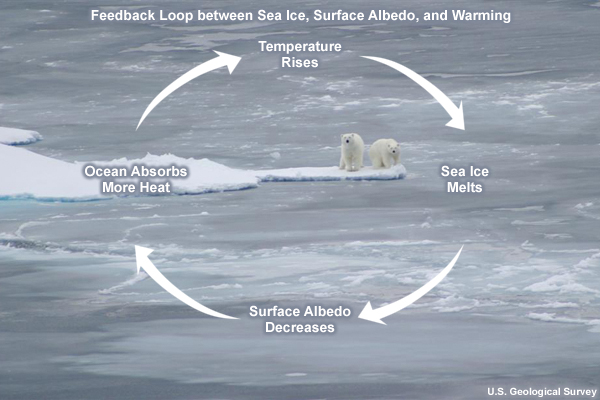Sea Ice

The polar regions are expected to be particularly sensitive to warmer temperatures. Higher levels of CO2 in the atmosphere lead to warmer temperatures in most parts of the world, including warmer temperatures in the world's oceans. Not only do surface waters heat up, but patterns of ocean circulation change, and sometimes warm water flows into a region that used to have cold water. These warmer temperatures melt more sea ice than usual in the summer and cause less sea ice to form in the winter.
Additionally, sea ice has a particularly strong feedback within the climate system. Sea ice reflects 50-90% of the sunlight that strikes it, absorbing little energy. Meanwhile, open ocean reflects less than 10% and absorbs the rest*. When there is less ice, the ocean absorbs significantly more solar energy and warms up more, causing more ice to melt.
The ice provides important habitat for polar bears and seals, as well as microscopic organisms like ice algae (algae that live within or attached to sea ice). Changes in sea ice will have a dramatic effect on life on earth, determining the fate of sensitive species such as polar bears, and influencing climate in places as far away as the equator.
